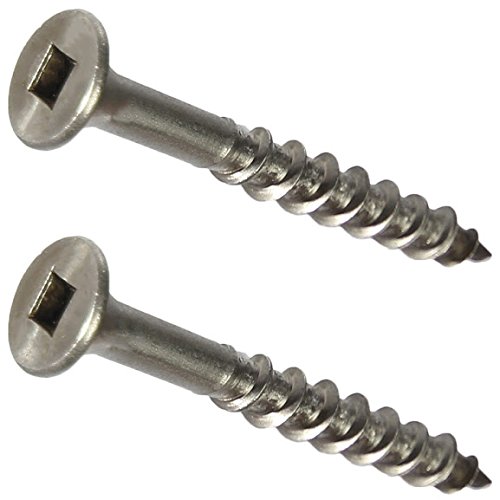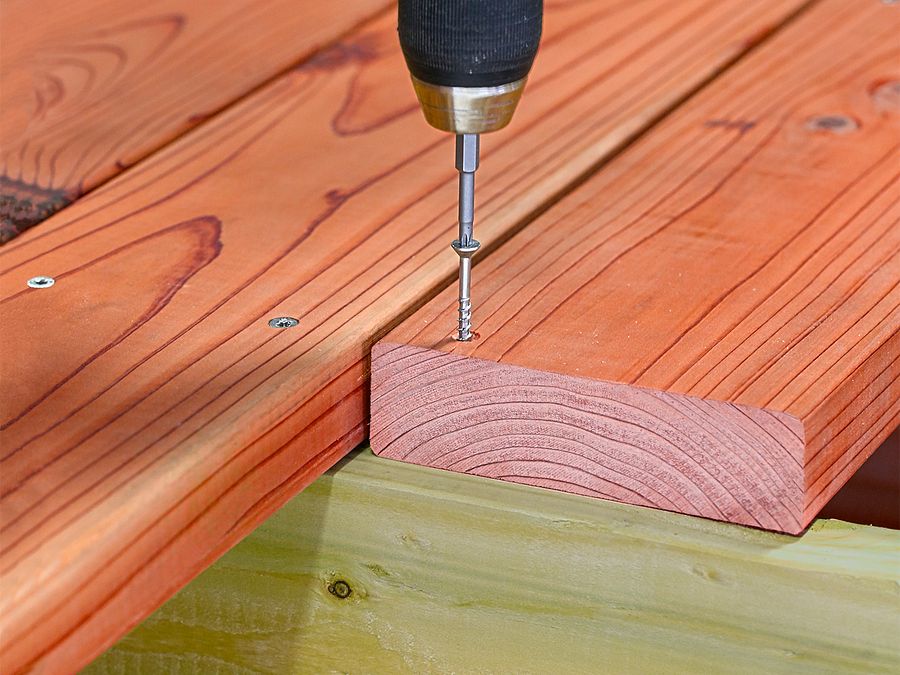Deck screws are the unsung heroes of outdoor decking projects, providing the strength, durability, and weather resistance needed to create a safe and long-lasting deck. Whether you’re a DIY enthusiast building a new deck or a professional maintaining an existing one, understanding deck screws is essential for ensuring your project stands the test of time. This article explores what makes deck screws unique, their materials, types, and best practices for selection and installation, helping you make informed decisions for your decking needs.
What Are Deck Screws?
Deck screws are specialized fasteners designed for outdoor deck construction, primarily used to secure deck boards to joists. Unlike nails or general-purpose screws, deck screws are engineered to withstand harsh outdoor conditions, including rain, humidity, and temperature fluctuations. Their key features include:
- Corrosion Resistance: Made from materials like stainless steel or coated steel to prevent rust.
- Deep Threads and Sharp Points: Ensure strong holding power and easy installation.
- Self-Tapping Design: Many deck screws create their own pilot holes, reducing the risk of wood splitting.

These attributes make deck screws ideal for both wood and composite decking, offering a cleaner and more secure finish compared to traditional nails.
How Do Deck Screws Differ from Other Screws?
Deck screws are distinct from other fasteners like wood screws and construction screws due to their outdoor-specific design. Here’s a breakdown of the differences:
| Feature | Deck Screws | Wood Screws | Construction Screws |
| Primary Use | Securing deck boards to joists | Indoor or dry woodworking projects | Structural framing and heavy-duty tasks |
| Corrosion Resistance | High (stainless steel or coated) | Low (not designed for outdoor use) | Moderate to high (varies by coating) |
| Thread Design | Deep, coarse threads for strong grip | Finer threads for softer woods | Coarse, heavy-duty threads for strength |
| Material | Stainless steel, coated steel | Steel, often uncoated | Steel, often coated for outdoor use |
- Deck Screws vs. Wood Screws: Wood screws lack the corrosion resistance and robust design needed for outdoor exposure, making them unsuitable for decks where rust and weathering are concerns.
- Deck Screws vs. Construction Screws: Construction screws are designed for structural applications like framing or heavy load-bearing tasks, while deck screws focus on securing non-structural decking materials.
These differences highlight why deck screws are the preferred choice for decking projects, ensuring durability and safety.
Materials and Coatings
The material and coating of deck screws are critical for their performance in outdoor environments. Common options include:
- Stainless Steel: Offers superior corrosion resistance, making it ideal for coastal or high-moisture areas. While more expensive, it ensures long-term durability.
- Coated Steel: Typically coated with zinc, paint, or polymer, these screws are cost-effective and suitable for most outdoor settings. However, they may not last as long as stainless steel in extreme conditions.
Why Coatings Matter: Outdoor decks face constant exposure to moisture and UV rays, which can degrade uncoated screws, leading to rust and weakened connections. A high-quality coating extends the lifespan of the screws and the deck itself.
Strength and Durability
Deck screws are designed to provide robust holding power, resisting both lateral (side-to-side) and withdrawal (pull-out) forces. Key points about their strength include:
- Holding Power: Deep threads and sharp points create a strong grip, keeping deck boards securely fastened.
- Durability: High-quality deck screws, especially those made from stainless steel, can last decades without corroding.
- Limitations: Deck screws are not structural fasteners and should not be used for heavy load-bearing tasks like framing. For such applications, use structural screws or bolts.
For example, a typical deck screw can hold significant weight, but always check the manufacturer’s specifications for load-bearing capacity, especially for high-traffic decks.
Types of Deck Screws
Deck screws come in various types to accommodate different decking materials and aesthetic preferences. The main categories are:
- Wood Deck Screws: Designed for traditional wood decks (e.g., pressure-treated lumber or cedar), these screws feature unthreaded shanks and coarse threads for optimal grip in wood. Common sizes include 2.5-inch screws for 5/4″ decking and 3-inch screws for 2″ boards.
- Composite Deck Screws: Engineered for composite decking, these screws have finer threads, smaller reverse-tapered heads, and sometimes reverse threads to prevent “mushrooming” (surface distortion). They are often color-matched to blend with composite boards. A common size is #10 diameter, 2.5 inches long.
- Specialized Screws: Include hidden fasteners for a seamless look or screws with built-in washers for added stability in specific applications.
Important Note: Never use wood deck screws on composite decking, as their larger heads can cause surface damage. Always follow the decking manufacturer’s recommendations.
Anatomy of a Deck Screw

Understanding the parts of a deck screw helps explain its functionality:
| Part | Purpose |
| Head | Visible top; styles (e.g., Flat/Bugle, Trim, Cap/Undercut) affect aesthetics and holding power. |
| Drive | Located in head; types (e.g., Phillips, Torx) determine driver bit and impact torque/stripping. |
| Shank | Unthreaded section; pulls materials together and prevents overheating. |
| Thread | Helical section; digs into material for tightening; may include reverse threads for composites. |
| Tip | Entry point; sharp, self-piercing tips reduce splitting and torque. |
For composite decking, screws often feature serrated threads and clear-out threads to minimize material buildup and ensure a clean finish.
Choosing the Right Deck Screws
Selecting the appropriate deck screws involves considering several factors:
- Decking Material: Use wood screws for wood decks and composite screws for composite decks to avoid damage or poor performance.
- Environment: Opt for stainless steel in high-moisture or coastal areas; coated steel is sufficient for most other regions.
- Project Requirements: Match screw length to board thickness (e.g., 2.5-inch for 5/4″ decking, 3-inch for 2×6 boards). For a 100-square-foot deck with 5.5-6″ boards and 16″ joist spacing, expect to use about 350 screws.
- Aesthetics: For composite decks, choose color-matched screws or hidden fasteners for a polished look.
Pro Tip: Always verify compatibility with your decking material. For example.
Installation Best Practices
Proper installation ensures your deck screws perform as intended. Follow these tips:

- Pre-Drilling: While many deck screws are self-tapping, pre-drill near board ends or in hardwoods using a 1/8-inch bit to prevent splitting.
- Screw Placement: Position screws 1 inch from board edges and ends for optimal strength.
- Torque Control: Use a high-quality driver bit (e.g., Torx or Hex to reduce stripping) and drive slowly with consistent pressure.
- Depth Control: Ensure screw heads are slightly below the surface to avoid trip hazards. A depth-setting tool helps achieve consistent results.
- Composite-Specific Tips: For composite decking, use screws with reverse threads, predrill near edges, and match screw color to boards. Consider plugs for a hidden fastener look.
Common Mistakes to Avoid:
- Using wood screws on composite decking, which can cause mushrooming.
- Over-tightening, leading to stripped screws or damaged boards.
- Failing to pre-drill in critical areas, risking splits.
Maintaining and Replacing Deck Screws
Over time, deck screws may need maintenance or replacement:
- Inspection: Regularly check for signs of rust or loosening, especially in high-moisture areas.
- Removing Old Screws: Use a matching driver bit; for stripped screws, employ a screw extractor or pliers.
- Replacement: Replace with screws of the same type and material to maintain consistency and performance.
Why Choose Deck Screws?
Deck screws offer several advantages over nails and other fasteners:
- Superior Holding Power: Deep threads provide a stronger grip than nails.
- Corrosion Resistance: Essential for outdoor durability.
- Reduced Splitting: Self-tapping designs and pre-drilling minimize wood damage.
- Cleaner Finish: Screws provide a more secure and aesthetically pleasing result.
These benefits make deck screws the go-to choice for decking projects, ensuring both functionality and visual appeal.
XILUO: Precision in Every Fastener
When it comes to deck screws, quality matters. At XILUO, we specialize in high-precision fastener molds that produce top-tier deck screws. With over 23 years of experience, our 10,000㎡ factory and advanced equipment ensure screws meet the highest standards for durability and performance. Certified with ISO9001, CE, and RoHS, XILUO delivers reliable solutions for global decking projects. Choose XILUO for precision-crafted fasteners that make your deck strong and lasting.

